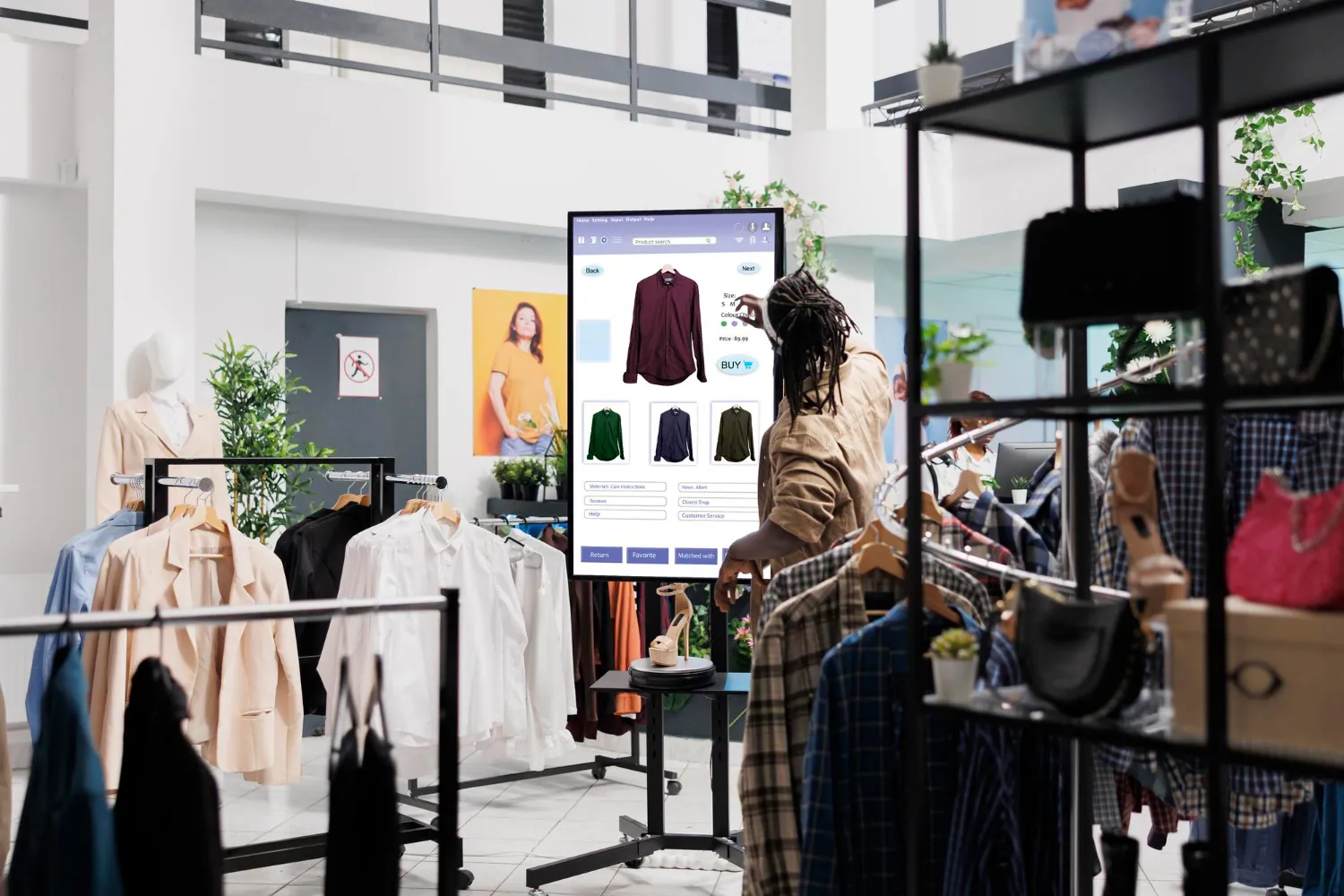Retail is changing a lot because of fancy computer stuff called AI. More and more people are shopping online, so stores are using AI to make shopping better for everyone. AI helps stores understand what you like and suggest things you might want to buy. It also helps stores figure out what’s popular and what’s not, so they can sell more stuff online. AI is here now, not just something we’ll have in the future, and it’s changing how stores talk to you, figure out what you want, and sell things online.
“Online stores want to make it easy for customers to find the right products quickly. They use AI to automatically put products into the right categories. Sometimes, a product could fit into more than one category. The idea is that when you type in a product’s name or a short description, the system figures out which category it belongs to. AI in Retail helps with this by looking at things like product features, pictures, and videos. This way, businesses can organize their products better, and customers can find what they’re looking for faster.”
How AI Can Help In Retailing?
1. Cutting costs: AI helps save money on running the store.
2. Making shopping smooth across all platforms: Shoppers have an easy time buying online or in-store.
3. Making marketing work better: Ads and promotions reach the right people at the right time.
4. Quick and accurate decisions: AI helps bosses make smart choices fast.
5. Managing stock better: AI keeps track of what’s in stock and what’s not.
6. Giving personal help to customers: Shoppers get tailored advice and support.
7. Spotting and stopping fraud: AI catches any tricky business before it causes trouble.
Also Read: AI Tools For Real Estate
What Does Retail Help In?
1. Demand forecasting: AI helps stores predict what customers want and where they want it. This helps them manage stock and avoid having too much or too little of a product.
2. Cashierless technology: Some stores are testing ways to make paying faster and easier. Instead of waiting in line, customers can use self-checkout machines or even walk out without scanning items, like Amazon’s Just Walk Out.
3. Automated inventory management: Stores need to keep track of what they have in stock. AI helps them do this efficiently, so they don’t waste money on excess inventory or run out of popular items.
4. Customer sentiment analysis: Retailers care about what customers think. AI analyzes feedback from social media, reviews, and other sources to understand how people feel about the store and its products.
Top 10 AI Tools and Software For Retail
1. PredictSpring
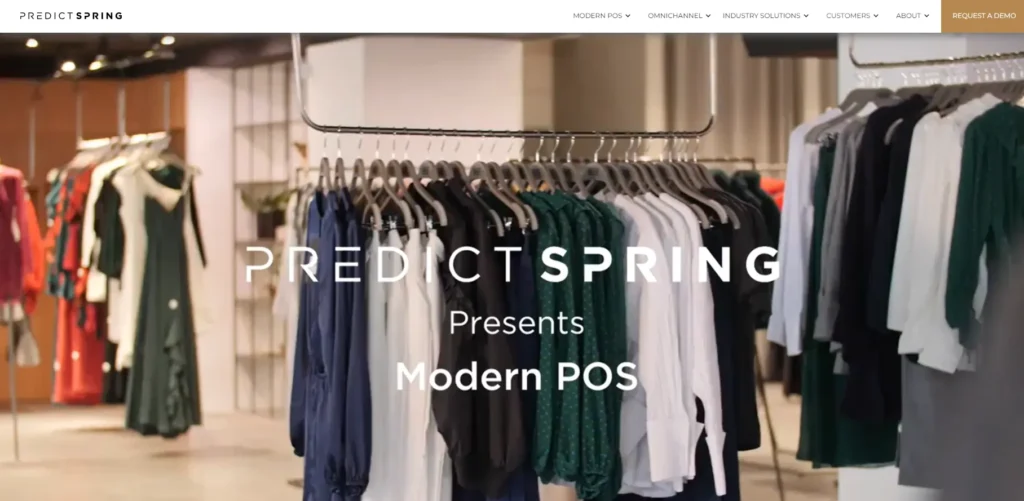
PredictSpring is a mobile commerce platform that uses AI to enhance the shopping experience. It provides personalized recommendations, manages inventory efficiently, and predicts customer behavior. Its importance lies in boosting sales by offering tailored experiences, streamlining inventory management, and improving customer satisfaction through personalized interactions.
Features:
- Personalized shopping experiences
- Efficient inventory management
- Predictive analytics for customer behavior
- Seamless integration with mobile commerce
- Enhanced customer satisfaction through tailored interactions
How to use:
- Step 1: Sign up for PredictSpring and integrate it with your existing e-commerce platform.
- Step 2: Customize the user interface to match your brand’s aesthetics and preferences.
- Step 3: Utilize PredictSpring’s AI-powered analytics to understand customer behavior and preferences.
- Step 4: Implement personalized recommendations and promotions based on AI insights.
- Step 5: Manage your inventory efficiently using PredictSpring’s inventory management tools.
- Step 6: Continuously analyze performance metrics and make adjustments to optimize the shopping experience.
Price:
- $8.5 million per year
2. IBM Watson Commerce
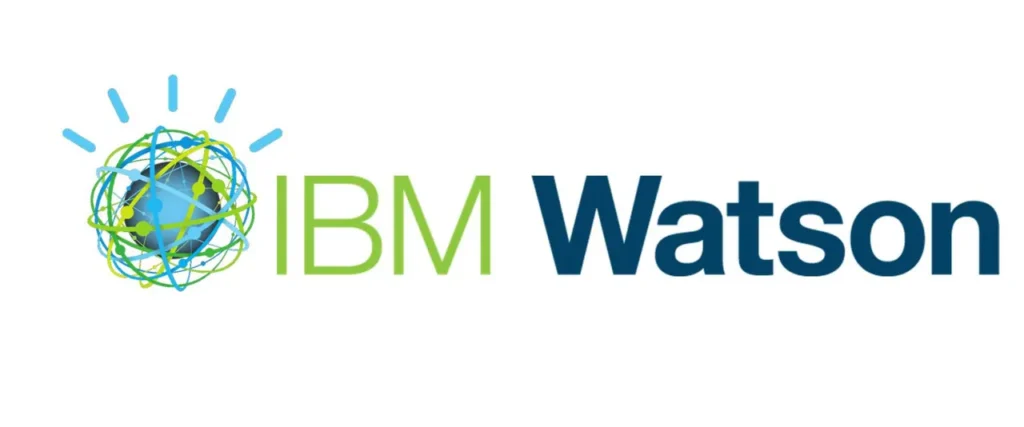
IBM Watson Commerce offers AI-powered tools for retailers, such as product recommendations and customer segmentation. It helps businesses understand customer preferences better, target marketing efforts effectively, and optimize inventory levels. By leveraging AI, IBM Watson Commerce enables retailers to deliver tailored experiences, drive sales, and stay competitive in the market.
Features:
- AI-powered product recommendations
- Advanced customer segmentation
- Predictive analytics for market trends
- Seamless omni channel experiences
- Real-time insights into customer behavior
How To Use:
- Step 1: Integrate IBM Watson Commerce with your existing e-commerce platform or CRM system.
- Step 2: Utilize Watson’s AI-powered tools to segment your customer base based on behavior, demographics, and preferences.
- Step 3: Implement personalized product recommendations on your website or app using Watson’s recommendation engine.
- Step 4: Leverage predictive analytics to forecast market trends and anticipate customer demand.
- Step 5: Optimize your marketing efforts by targeting specific customer segments with personalized messaging and offers.
- Step 6: Monitor performance metrics and adjust your strategies based on real-time insights from Watson Commerce.
Price:
- $500 per month
Also Read: AI tools for Amazon Sellers
3. Salesforce Commerce Cloud
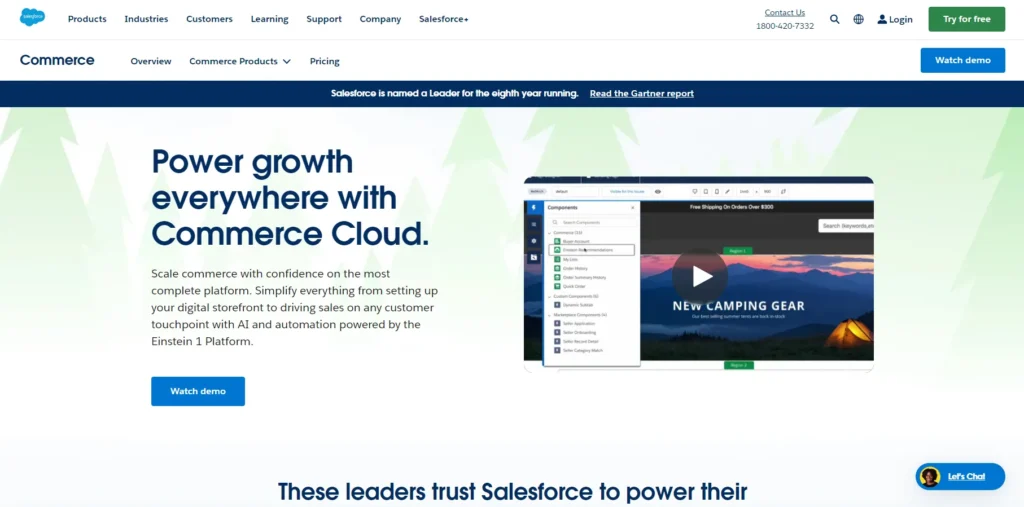
Salesforce Commerce Cloud uses AI for predictive analytics, personalized product recommendations, and AI-driven chatbots. It enables retailers to anticipate customer needs, provide personalized recommendations, and offer seamless customer service. This tool is essential for enhancing customer engagement, increasing conversion rates, and building long-term customer relationships.
Features:
- Predictive analytics for personalized recommendations
- AI-driven chatbots for customer service
- Integrated marketing automation
- Seamless omnichannel experiences
- Customer journey optimization
How To Use:
- Step 1: Set up Salesforce Commerce Cloud and integrate it with your existing systems.
- Step 2: Use Salesforce’s AI tools to analyze customer data and segment your audience.
- Step 3: Implement personalized product recommendations and promotions on your website or app.
- Step 4: AI-driven chatbots to provide seamless customer support and assistance.
- Step 5: Leverage predictive analytics to forecast sales trends and optimize inventory levels.
- Step 6: Continuously monitor customer interactions and refine your strategies based on insights from Salesforce Commerce Cloud. Deploy
Price:
- $3600 per year
4. Blue Yonder

Blue Yonder employs AI and machine learning for demand forecasting, inventory optimization, and pricing strategies in retail. It helps retailers accurately predict customer demand, optimize inventory levels, and set optimal pricing to maximize profitability. By leveraging AI, Blue Yonder empowers retailers to make data-driven decisions, minimize stockouts, and improve overall operational efficiency.
Features:
- AI-driven demand forecasting
- Inventory optimization algorithms
- Dynamic pricing strategies
- Supply chain visibility and optimization
- Predictive analytics for market trends
How To Use:
- Step 1: Integrate Blue Yonder with your existing supply chain management systems.
- Step 2: Use Blue Yonder’s AI-driven demand forecasting tools to predict customer demand accurately.
- Step 3: Optimize inventory levels and replenishment strategies based on AI insights.
- Step 4: Implement dynamic pricing strategies to maximize profitability and sales.
- Step 5: Leverage real-time analytics to monitor supply chain performance and identify areas for improvement.
- Step 6: Collaborate with suppliers and partners using Blue Yonder’s supply chain visibility tools.
Price:
- $2 million per year
5. Optimizely
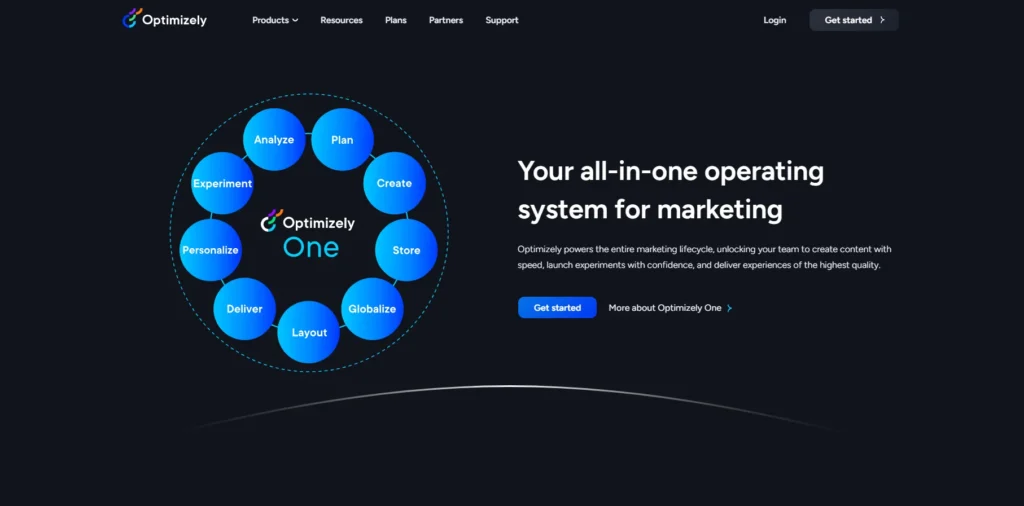
Optimizely specializes in AI-driven experimentation and personalization for optimizing websites, apps, and marketing campaigns. It enables retailers to test different strategies, personalize content based on customer preferences, and improve the overall user experience. Optimizely is crucial for driving conversion rates, increasing customer engagement, and maximizing ROI on marketing efforts.
Features:
- AI-driven experimentation for website optimization
- Personalization features for targeted marketing
- A/B testing and multivariate testing capabilities
- Real-time analytics for data-driven decisions
- Seamless integration with various digital platforms
How To Use:
- Step 1: Sign up for Optimizely and integrate it with your website or app.
- Step 2: Define your experimentation goals and hypotheses for testing.
- Step 3: Create A/B tests or multivariate experiments to optimize different elements of your website or app.
- Step 4: Use Optimizely’s AI-driven personalization features to deliver targeted content to specific audience segments.
- Step 5: Analyze experiment results and make data-driven decisions to improve user experience and conversion rates.
- Step 6: Continuously iterate and test new ideas to refine your digital experiences using Optimizely.
Price:
- $3600 per year
6. SAP Customer Activity Repository
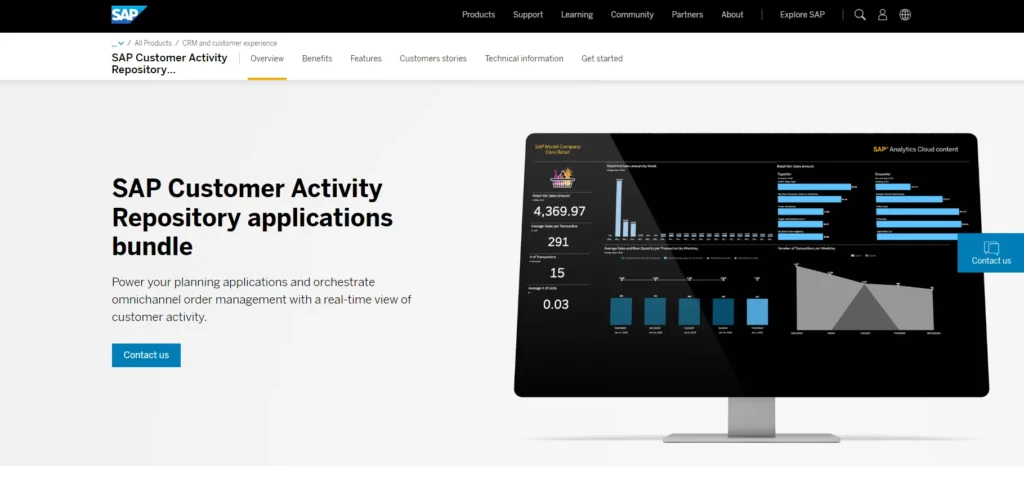
SAP’s Customer Activity Repository provides AI-powered insights into customer behavior, inventory management, and demand forecasting. It helps retailers understand customer preferences, optimize inventory levels, and forecast demand accurately. By leveraging AI, SAP’s solution enables retailers to improve sales, reduce costs, and enhance the overall shopping experience.
Features:
- AI-powered insights into customer behavior
- Inventory management optimization
- Demand forecasting and planning
- Real-time analytics for decision-making
- Seamless integration with SAP’s ecosystem
How To Use – not specific
- Step 1: Set up SAP Customer Activity Repository and integrate it with your existing systems.
- Step 2: Collect and consolidate customer data from various touchpoints, including online and offline channels.
- Step 3: Utilize AI-powered analytics to gain insights into customer behavior, preferences, and purchase history.
- Step 4: Forecast demand and plan inventory levels based on AI insights and market trends.
- Step 5: Implement personalized marketing campaigns and promotions tailored to individual customers or segments.
- Step 6: Monitor key performance indicators (KPIs) and adjust strategies to optimize sales and customer satisfaction.
Price:
- $40 per month
7. Dynamic Yield
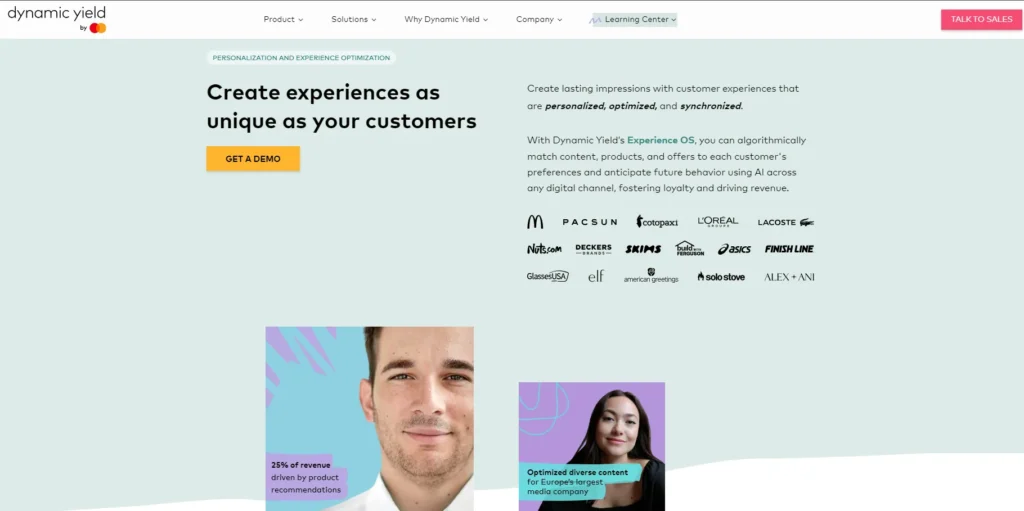
Dynamic Yield offers personalization and optimization solutions powered by AI across various channels. It enables retailers to deliver individualized experiences, increase conversion rates, and drive customer engagement. Dynamic Yield is essential for retailers looking to enhance the relevance of their marketing efforts, improve customer satisfaction, and ultimately increase revenue.
Features:
- Personalization across multiple channels
- AI-driven content optimization
- Real-time decisioning engine
- Customer segmentation for targeted campaigns
- A/B testing and experimentation capabilities
How To Use:
- Step 1: Sign up for Dynamic Yield and integrate it with your website, app, or other digital channels.
- Step 2: Define personalization goals and audience segments based on behavioral data and preferences.
- Step 3: Use Dynamic Yield’s AI-powered algorithms to deliver personalized content, product recommendations, and offers.
- Step 4: Implement A/B tests and multivariate experiments to optimize conversion rates and user engagement.
- Step 5: Continuously analyze performance metrics and refine personalization strategies based on real-time insights.
- Step 6: Leverage Dynamic Yield’s omnichannel capabilities to deliver consistent and personalized experiences across all touchpoints.
Price:
- $600 per month
8. Vue.ai
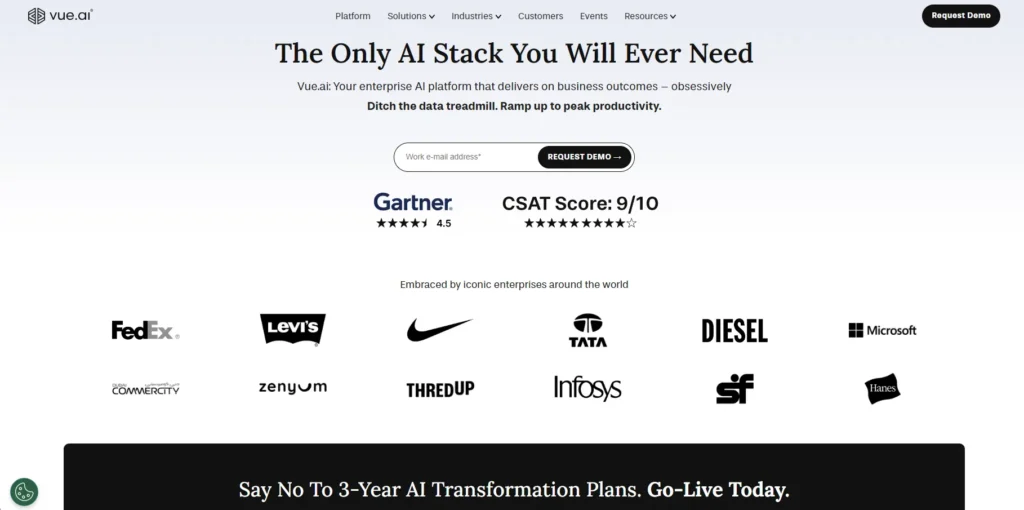
Vue.ai provides AI-powered solutions for visual merchandising, product recommendations, and personalized styling in e-commerce. It helps retailers showcase products more effectively, recommend relevant items to customers, and offer personalized styling advice. Vue.ai is crucial for enhancing the visual appeal of e-commerce platforms, increasing sales, and improving customer loyalty.
Features:
- AI-powered visual merchandising
- Product recommendations based on visual similarity
- Virtual try-on and styling advice
- Personalized content creation
- Integration with e-commerce platforms
How To Use:
- Step 1: Integrate Vue.ai with your e-commerce platform or digital storefront.
- Step 2: Utilize Vue.ai’s AI-powered visual merchandising tools to enhance product discovery and showcase items effectively.
- Step 3: Implement personalized product recommendations based on visual similarity and customer preferences.
- Step 4: Offer virtual try-on experiences and styling advice to enhance the shopping journey.
- Step 5: Use Vue.ai’s analytics to track user interactions and optimize visual merchandising strategies.
- Step 6: Continuously update and refresh product images and content to maintain relevance and engagement.
Price:
- $300 per year
9. Relex Solutions
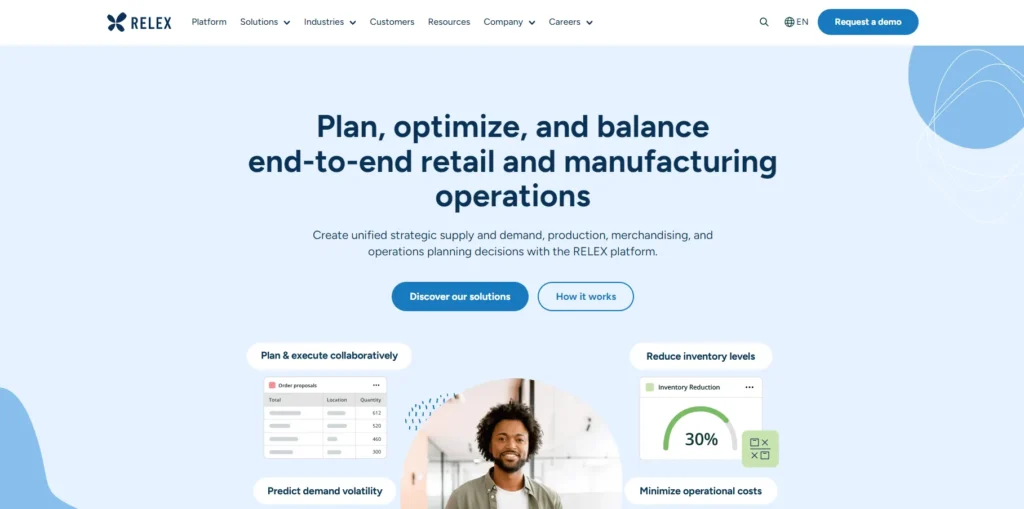
Relex offers AI-driven solutions for demand forecasting, replenishment optimization, and supply chain management in retail. It helps retailers forecast demand accurately, optimize inventory levels, and streamline supply chain operations. Relex Solutions are essential for retailers seeking to minimize stockouts, reduce excess inventory, and improve overall supply chain efficiency.
Features:
- AI-driven demand forecasting and planning
- Replenishment optimization algorithms
- Inventory optimization across the supply chain
- Supplier collaboration tools
- Real-time alerts and analytics for supply chain visibility
How To Use:
- Step 1: Integrate Relex Solutions with your existing supply chain management systems and ERP software.
- Step 2: Collect and analyze historical sales data and market trends to forecast demand accurately.
- Step 3: Optimize inventory levels and replenishment strategies based on AI-driven demand forecasts.
- Step 4: Collaborate with suppliers and partners to streamline procurement and logistics processes.
- Step 5: Monitor supply chain performance in real-time and proactively address any issues or disruptions.
- Step 6: Continuously refine demand forecasts and inventory strategies based on feedback and changing market conditions.
Price:
- $3000 per year
Also Read: AI Fashion Designer Tools
10. Lobster

Lobster is an AI-powered platform that helps retailers discover and license user-generated content for marketing and product campaigns. It enhances brand authenticity, engages customers with authentic content, and drives conversions. Lobster is crucial for retailers looking to leverage user-generated content to build brand trust, increase brand awareness, and drive sales.
Features:
- AI-powered content discovery and licensing
- User-generated content curation
- Rights management for images and videos
- Integration with social media platforms
- Advanced search and filtering capabilities
How To Use:
- Step 1: Sign up for Lobster and connect your social media accounts and digital platforms.
- Step 2: Use Lobster’s AI-powered content discovery tools to find relevant user-generated content (UGC).
- Step 3: License and obtain rights to use UGC for marketing campaigns, product promotions, and branding initiatives.
- Step 4: Seamlessly integrate licensed UGC into your website, social media channels, and other marketing materials.
- Step 5: Track the performance of UGC-based campaigns and analyze engagement metrics.
- Step 6: Engage with your audience and encourage user-generated content creation to build brand advocacy and authenticity.
Price:
- $10 for every 10 Pages
Conclusion
AI holds immense potential for improving retail businesses. It aids in managing inventory efficiently, optimizing product offerings, and accurately forecasting demand. As online giants like Amazon delve into AI experimentation, its influence on online shopping will likely become more evident. For those interested in investing in AI’s role in retail, several options exist. One can consider individual stocks of companies actively employing AI in their operations.
Alternatively, exploring AI-focused stock lists or investing in AI exchange-traded funds (ETFs) offers exposure to a broader range of AI-driven companies in various sectors, including retail, while AI may not be visibly transforming the shopping experience in brick-and-mortar stores, its impact on streamlining operations and enhancing customer satisfaction is undeniable. As AI continues to evolve, its role in shaping the future of retail will undoubtedly become more pronounced.
